Table of contents
Learn all about Reiki therapy!
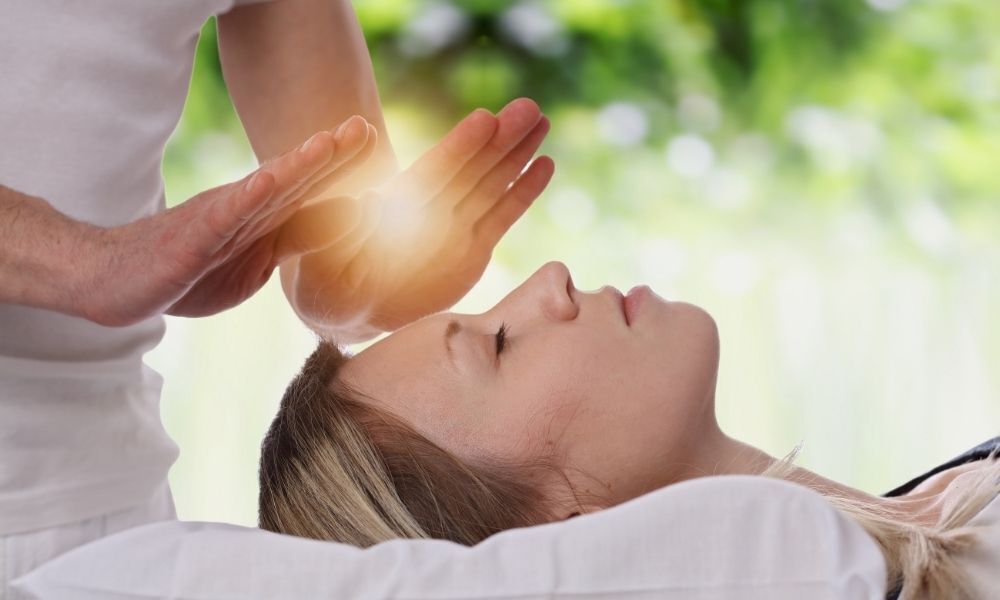
Reiki is a practice of holistic therapy that has been widespread in recent years and is based primarily on the transfer of energy from the universe to living beings in order to cleanse and balance the body as a whole.
It is a complementary health treatment that brings well-being, tranquility, pain relief and also helps people with depression through the imposition of hands on body parts, animals and also objects. Understand what Reiki is, how it works, its history and know a little more about this energy technique.
Understanding Reiki
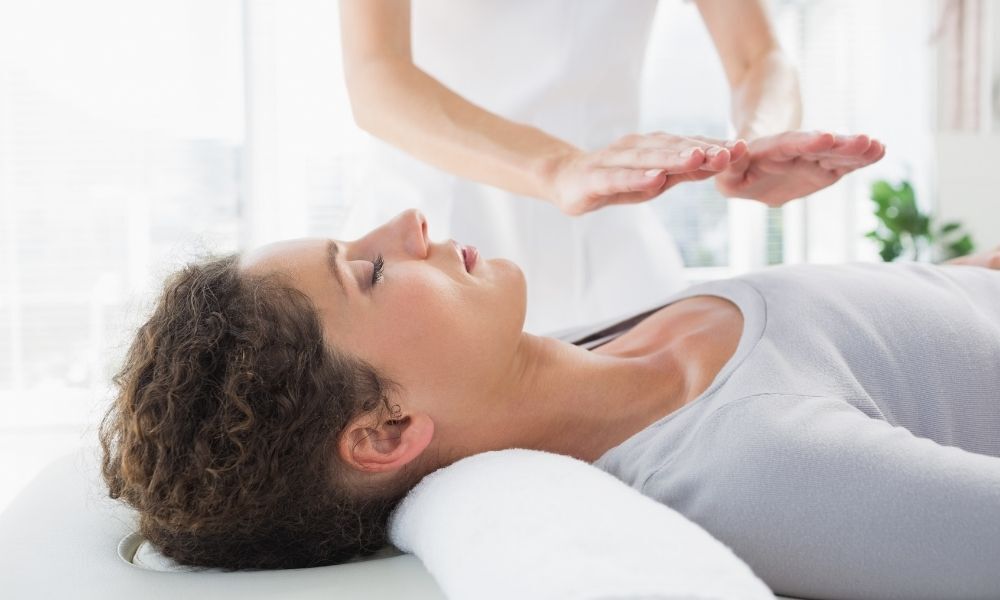
Several cultures, mostly oriental, have records of health treatment with the transfer of energy through the hands, which act as an energy channel. Reiki is exactly that, a natural system of harmonization and replacement of energy that aims to recover and maintain the health of the individual so integral.
Below, you will understand a little better what Reiki is, how it works, the origin of the technique, the main fundamentals and how the application can be done.
What is Reiki?
Reiki represents the Usui System of Natural Therapy, in honor of its creator, MIkao Usui. "Rei" means universal and represents the Cosmic Energy Essence that is in everything and "Ki" is the vital energy that is present in all living beings and is responsible for maintaining life.
Reiki is the meeting of these energies, that of the Universe and the vital energy of each being, in this case, the Reiki practitioner, called the reikian, who acts as a channel for the transference of Cosmic Energy.
History
The specific emergence of the Reiki technique happened through Mikao Usui, a Japanese priest born in August 1865. There are several gaps and lack of records in Usui's story, but the most accepted and considered official says that in 1922, Usui performed a deep meditation combined with a fasting technique for 21 days isolated on the sacred mountain Kurama, near Kyoto, Japan.
The meditative state, coupled with fasting and location in the midst of nature and total isolation would have made it possible for him to receive the understanding and symbols of Reiki, i.e. initiation, through a vision.
On his way down the mountain, Usui was able to heal some sick people along the way by using his hands on their wounds and pains and he never stopped, and performed pilgrimages throughout Japan until his death in 1926.
Before his death, Usui passed the technique to approximately 10 people, who were responsible for performing the initiation of other people and thus continue the dissemination of Reiki.
Fundamentals
Unlike Western culture, which treats health from a pathological and physical point of view, that is, with a focus on the symptoms that the patient presents, Reiki is part of Eastern culture, where the organism is analyzed as a whole: body, mind, emotion and spirit.
The Reiki technique makes use of the primordial energy that is available in the Universe, directing it to the patients and acting to balance and cleanse whatever is needed at that moment.
Relationship of Reiki with the Chakras
The chakras are energy centers of the body responsible for the entire balance of the region where they are located, including the corresponding organs and emotions.
It is already known that the chakras also have a connection with specific glands, so the more balanced they are, the healthier they are, because the balance allows the energy flow to happen freely throughout the body. The application of Reiki directly on the main chakras promotes this balance.
Application to humans and animals
As the principle is the transfer of energy in order to provide harmonization, Reiki can be applied both in people, animals and even plants. In addition, Reiki can be done anywhere, because the quality of the session will depend on the reikian and not the environment or the person/being who will receive the energy.
However, the quieter the place, the better for concentration when applying Reiki. It is important to keep in mind that Reiki doesn't need to be used only when you have a problem, pain or, in the case of plants, some deficiency.
How does Reiki work?
According to Chinese medicine, the human body and of all living beings is composed of several layers, the so-called bodies, where the physical is the only one that we can see with the naked eye. However, the other bodies also influence health and it is at this point that Reiki also works.
Although it looks like the energetic passes performed in religious houses, Reiki is a therapy that has no specific connection with religion. It can be learned and applied by anyone, because the energy transmitted is not the energy of the reikian, but of the Universe.
In other words, the Reiki practitioner should not become energetically exhausted after a Reiki session, because he only acts as a channel for this energy, which is inexhaustible.
Benefits of Reiki
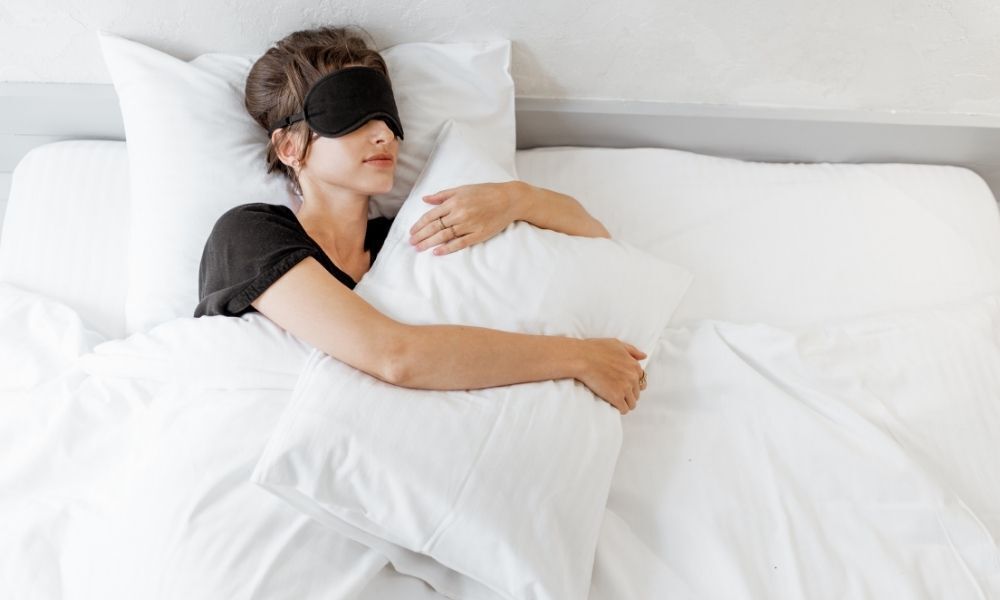
The application of Reiki can bring various benefits to living beings, whether they are people, animals or plants. The energy acts positively on physical, emotional and mental issues, always helping to balance the body as a whole. As a result, the benefits of Reiki range from relief of pain to reducing anxiety.
Chronic pain relief
One of the benefits of Reiki is the relief of chronic pain, that is, frequent pain, such as back pain, migraines and joint pain. A Reiki session by itself can already provide relief because of the relaxation caused at the time of application, since the ideal is that both parties concentrate at the moment.
The regular application enhances the balance of the body as a whole, which promotes a better flow of energy, not to mention the direct application on the site of pain.
Better quality of sleep
By working balancing the chakras, which are directly linked to the glands of the body, the production of hormones that regulate sleep is positively affected, so that the biological clock starts working better. Thus, good nights of sleep start to become more frequent as well.
Stress and anxiety relief
The benefits of Reiki add up and trigger several other changes in the body, such as decreased anxiety and less stress. This is because a good night's sleep, in itself, already prepares the body to face the day.
The human body learns habits and the more we insert certain attitudes in the routine, the more the body responds to them. In this sense, the relaxation provided by the Reiki sessions will also help in reducing the anxiety of everyday life so that the person remains longer in a state of balance.
Helps in the treatment against depression
It is very important to emphasize that depression is a serious issue and must be evaluated by a specialized doctor, as the case often involves the use of medication. However, Reiki can be a fundamental ally in the treatment, mainly because there are no side effects from the applications.
The energetic balance provided by Reiki aligns the person's energy as a whole, so that the symptoms of depression can be eased little by little.
Improvement in quality of life
In addition to acting directly on specific issues such as pain and diseased organs, Reiki acts by balancing the chakras and the region of the glands of the body. With the body all regulated, the tendency is an increasing quality of life. Tensions, concerns, chronic pain, unhealthy patterns in daily life, etc., are points where Reiki can exert influence.
Reiki Principles
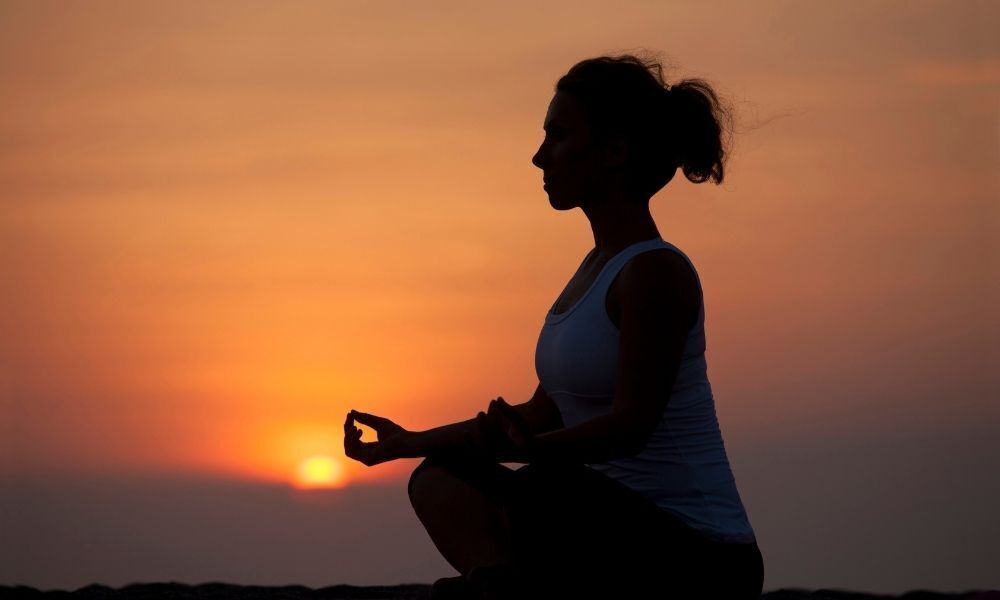
The way the western world treats people's health is based on the treatment of the disease. The oriental techniques are different and act much more on the prevention and balance of the organism as a whole because of the principle that a balanced body is a healthy body. It is in this concept that Reiki also acts.
For this worldview to be put into practice, Reiki is based on 5 principles, which should be incorporated into the life of the reikian and the patients whenever possible, in order to avoid the development of energetic imbalances. They are found in some variations of words, but always maintaining the same meaning. They are
1st principle: "Just for today I am calm"
The principle "just for today" guides all the other principles. The concept is that the evolution and balance of each one is built daily, so the idea of bringing the thoughts to the present, which is the only moment where it is possible, in fact, to create the reality of each one. Live one day at a time.
2nd principle: "I trust only for today".
Do not worry and trust. Worry is a previous suffering about something that there is no certainty and overloads the mind and emotions, affecting the whole body. Try to select the thoughts and give attention to what really matters. The rest, trust and let go, because if there is no way to control, it is not worth spending energy worrying. Just for today, trust.
3rd principle: "Just for today I am grateful".
Several philosophies point out that expressing gratitude is beneficial for the human being. Being grateful does not mean to stagnate and stop going in search of what you want, but rather, recognize the value of things, from the smallest to the largest and be aware that each thing has its function in life.
When true gratitude is expressed, the feeling of worthiness is emanated to the Universe, that is, being grateful provides paths to abundance. Start asking less and being more grateful for what you already have.
4th principle: "Just for today I work honestly"
Work is responsible for providing the means of survival in our current society through money, which is a positive thing if used wisely. Therefore, all work is worthy and adds some kind of growth and learning, therefore, one of the principles of Reiki has to do with giving your best at work and doing it with honesty.
When you put intention, love and will into your actions, they flow more easily, because everything is an energy field.
However, do not take it to the extreme, because Reiki is intended to bring more quality of life and health, so dedicate yourself only to work, especially to escape from problems, is also far from healthy.
5th principle: "Just for today I am kind"
The principle of kindness present in Reiki was also punctuated by the master Jesus when he said to do to others what you wish for yourself. So, don't forget that the world is governed by the law of cause and effect, so be kind, after all, everyone is carrying their own trunk.
Don't confuse kindness with submission. Being kind is about respecting yourself and respecting others. Too often, people go out of their way to be kind to others, but this takes away from the other person's opportunity to learn from a "no." Be kind and know how to say "no" at the right moment.
Reiki levels
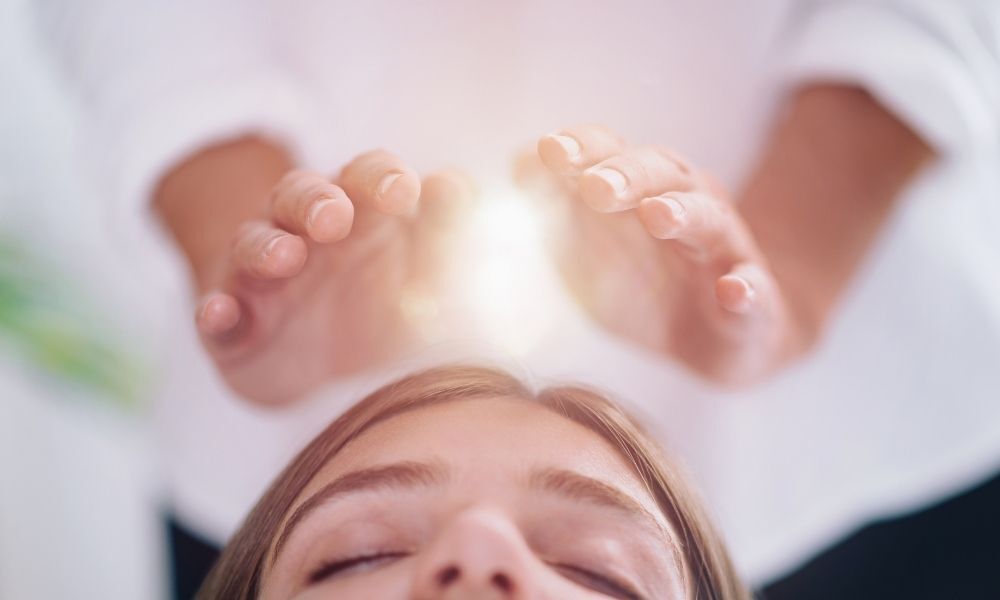
To become a reikian, it is necessary to go through the process of initiation by a qualified person, called a master. The masters are people who have performed all levels of Reiki training, always with another qualified master. It is possible to pull the family tree and thus get to Mikao Usui, disseminator of the technique and the first to receive initiation through the vision on the sacred mountain.
Those interested in learning Reiki do not necessarily need to go through all the levels, as level I already enables the person, tuning them to the channel of Universal energy. The choice of going through the other levels will depend on the objective that is intended with Reiki. Below, understand what is taught at each level.
Level I
In the first level, called "The Awakening", the student learns the origin of Reiki, the basic principles, how it works and notions of responsibility in the application, after all, even if the student does not wish to act as a therapist, he will be able to apply Reiki in other beings and this will always involve ethics and responsibility.
In this level, the student receives the initiation, that is, is tuned to the crown chakra so that the Ki energy can begin to flow from the Universe through that person. It is in this level that one learns the first symbol of Reiki, Cho Ku Rei, which has a more physical action.
After the initiation, the now reikian must do a process of self-application of Reiki for 21 days in a row. This step is very important as it is an initial self-cleansing which is based on the holistic pattern that says that the human body takes 21 days to renew itself and acquire a new habit.
Also, internal purification is key, as the first step to healing is to heal yourself before you start attending to others.
Level II
Although from level I the student can self-apply and even apply to others (after doing the 21-day cleansing), it is through level II that the deepening happens.
This level is called "The Transformation" and enables the Reikian to receive the next two symbols, Sei He Ki and Hon Sha Ze Sho Nen. Attunement at level II amplifies the student's vibratory power and the use of the symbols allows the Reiki energy to act on mental and emotional issues.
From the teachings of this level, the reikian is able to send Reiki at a distance and also to different times.
Level III
Known as "The Realization", level III gives the student the degree of Inner Master. A sacred symbol is taught, which further amplifies the student's energetic potency and intensifies all the other symbols previously taught. It is by passing through the third level that the reikian is able to harmonize several people at the same time.
In addition, the depth in the treatment itself is also intensified, for it is on level III that the reikian comes into contact with his or her own karma.
Master level
The last level of Reiki is called "The Master" precisely because it allows the reikian to teach and initiate other people in Reiki. It is the most intense and time consuming level, reaching months of teaching and with some commitments such as care with food.
Reiki Symbols
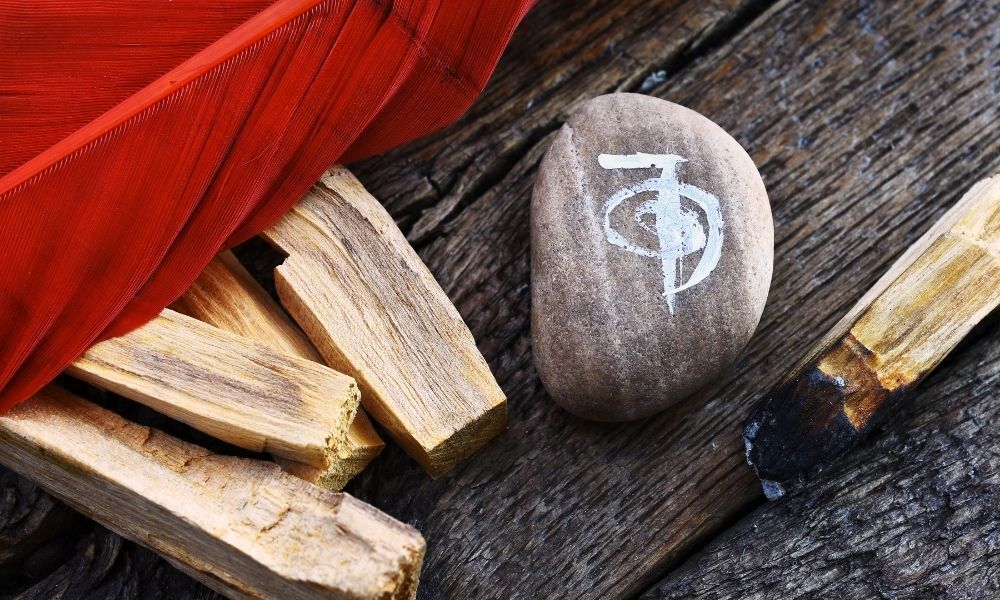
Symbols are key and should be treated with respect and purpose, without trivialization. The disclosure of the symbols of Reiki has been and still is, including a very controversial topic because of this issue. Therefore, always keep in mind that you are dealing with ancient knowledge and deserve respect and care.
A symbol is the junction of an image with a sound, the name, and works as a gate or button that triggers some knowledge or power. More or less like mantras.
Like Mikao Usui himself, the true story of the origin of the energetic symbols used in Reiki does not have a very firm proof, which in no way diminishes the power and credibility of the practice. Usui would have received the symbols through the spiritual vision he had while meditating on the sacred mountain.
The initial levels of Reiki use 3 basic symbols, but scholars say that there are many more symbols and keys that have been lost over the centuries. Here, you will get to know the main 3. They should be visualized at the place of Reiki application during the practice along with the name of each one. There is also the importance of "drawing" it with the mind from the correct order of writing,as you will see below.
Cho Ku Rei
Cho Ku Rei is the first symbol learned in Reiki and also the first that is usually applied during the session. It works as if it were the gateway to the other symbols in the treatment. It is of Taoist origin and has as its meaning the "here and now", bringing the action to the present moment, balancing the physical body and the so-called etheric double.
It can also be applied in environments to cleanse the place and eliminate negative thoughts and feelings. In addition, the use of the symbol on water and food also makes them more energetically suitable for consumption.
Sei He Ki
Sei He Ki is the second symbol taught to the Reiki apprentice and has Buddhist origins. Its main function is to bring harmonization and emotional purification of the chakra/region where it is being applied, acting on issues of the unconscious.
It helps to dilute negative patterns that cause hurt, anger, guilt, fear, insecurity, frustration, etc. Because it deals with emotions, it is a symbol of connection with the moon and is very positive to be used also in animals, because they are beings that absorb the emotions of their owners.
Hon Sha Ze Sho Nen
The last symbol of the initial triad of Reiki is the Hon Sha Ze Sho Nen, which originated in Japan and is composed of the so-called kanji, elements of Japanese writing. It is the most difficult to visualize because of the complexity of the drawing, but keep in mind that the correct order of strokes is essential to be done at the time of application.
This symbol directs the energy to the mental body, that is, the conscious, and has connection with solar energy. With it, it is possible to make the application at a distance, because its potential is very powerful and exceeds physical limits. In addition, the Hon Sha Ze Sho Nen also goes beyond the border of time, and can be applied to treat people who have already gone or situations from the past or that are stillto happen.
Other information about Reiki
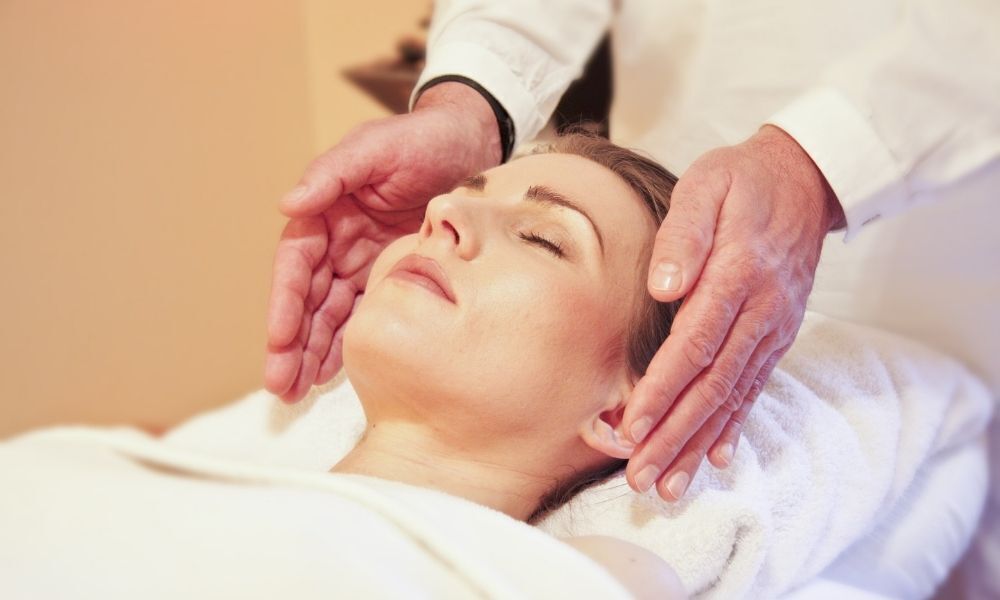
Reiki is not inaccessible or difficult, which does not mean that it is simple, as it involves theoretical study and commitment in practice, especially with the cleaning in itself. Understand how and when can be made the application of Reiki and also how to make to become a reikiano.
Reiki at a distance
One of the great benefits of the Reiki technique is that it can be applied at a distance, which expands its power of action. It is possible to apply Reiki energy to people on the other side of the environment, in other cities, other countries and also in areas of the body where we cannot reach, such as the back, for example.
However, before applying Reiki at a distance, mentally ask permission to begin the process, since, because it is at a distance, the person may not know about the application and the energy is compromised because of the invasion of privacy.
In distance application, the order of the symbols should be reversed and the first to be used is Hon Sha Ze Sho Nen, which opens the channel of distance sending, followed by Sei He Ki and then Cho Ku Rei.
There are several forms of distance application such as the reduction technique, which is to imagine the person between your hands, the substitute technique, where an object is placed in the place of the patient, the photo technique, which uses the image of the person, and, finally, the knee technique. In the latter, the reikian must consider that the knee is the head and the thigh is the rest of the body. The other leg represents the back.
When not to do Reiki?
Reiki has no contraindications or side effects and can be applied to anyone anywhere. However, one must keep in mind that Reiki does not save and is not the answer to everything. Balance and healing are complex issues involving habits, diet, attitudes, thoughts and external treatments.
Scientific research on Reiki
Like any holistic therapy, Reiki also does not escape controversy over its effectiveness. Like many unexplained topics or those that took centuries to be recognized or proven (such as the fact that the Earth rotates around the Sun, a theory that led scientist Galileo Galilei to his death), Reiki divides opinions and even research for and against does not bring certainty.
However, there are researchers who back up the theories and positive health effects of applying Reiki. So, search for yourself and try receiving Reiki or study more on the subject to draw your own conclusions.
How to learn Reiki?
The reflex of putting your hands on a wound or region where there is pain, accompanies the human being for a long time. Proof of this are the historical records of healing techniques with his hands in Tibet more than 8 thousand years ago. Just this act already brings comfort and soothes pain, because there is energy, is the principle of Reiki.
However, it is with the level I initiation that a qualified master unblocks or enhances each person's channel so that the Reiki energy can, in fact, flow from the Universe into people's hands.
In addition, the level I Reiki course also brings all the history, concepts and Reiki philosophy, fundamental for the application to have more power. There are several schools spread throughout Brazil that offer courses, search for the one that has more to do with your goals.
Where to do and how much does a session cost?
Because it is considered a holistic therapy, alternative medicine spaces usually have the application of Reiki. But with the dissemination of the technique, many people who do not necessarily work with Reiki, but did the attunement can apply, if desired. You may have some acquaintance who is reikiano and does not know.
The sessions in the spaces vary in price, as well as any other holistic therapy such as acupuncture, shiatsu, etc., because factors as time of profession, level of qualification of the professional, time of session, physical space and the city directly influence the values.
The practice of Reiki works on the physical, mental, emotional and spiritual bodies!
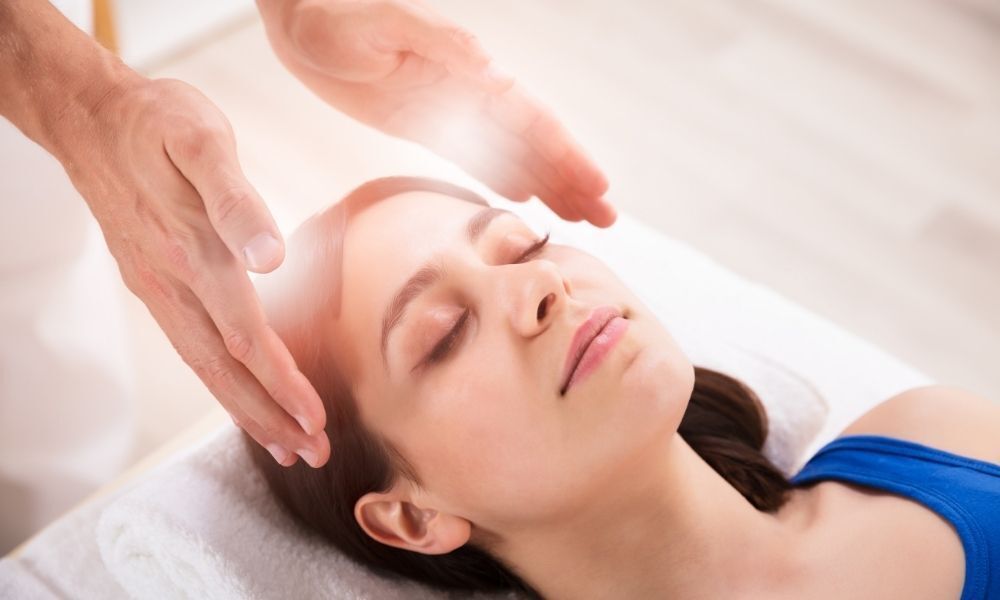
In this article, it was possible to know a little about Reiki therapy and realize that it is much more than a technique to proportion well-being and energy alignment through the imposition of hands, because its benefits go beyond the physical and health performance.
The philosophy behind Reiki also makes an invitation to look around and rethink the way of life and the relationships that human beings have lived and built throughout their passage on planet Earth.
It is in this sense that Reiki also emerged as a way to assist in a change of behavior, as a current that can benefit all living beings and situations, in building a better world.

